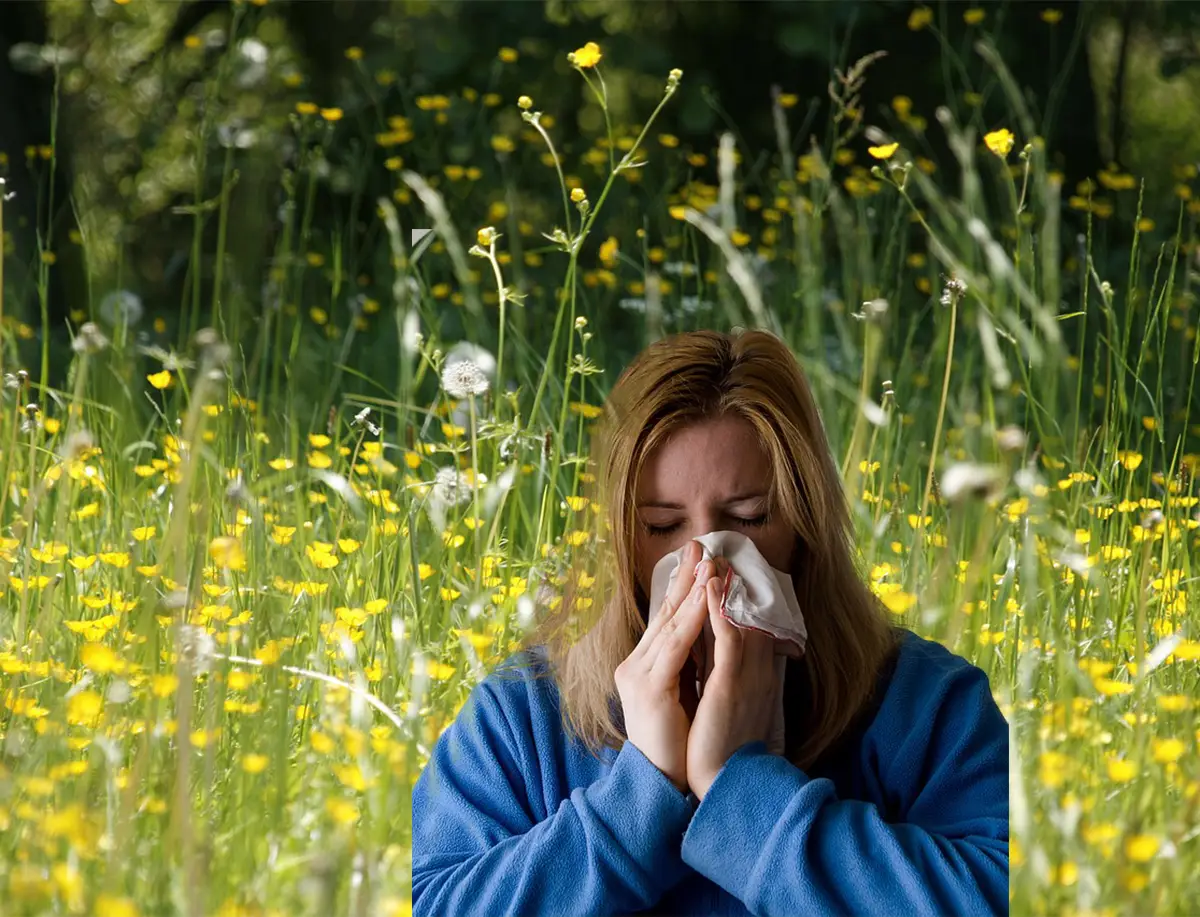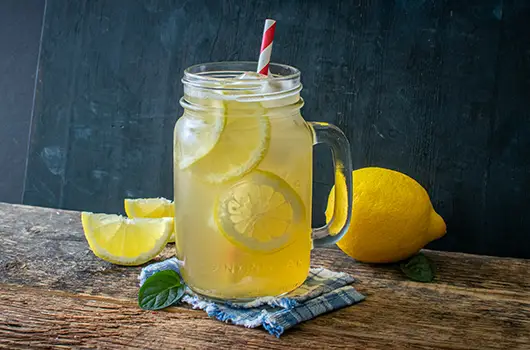Natural Allergy Relief
LifeSource Natural Foods | Posted on |

Spring brings the occasional showers, and almost constant showers of pollen on everything outdoors. If you experience pollen allergies, you may be dreading the sneezing, and other symptoms of your immune response to allergens.
Fortunately, spring also brings an abundance of nettles, growing wild around us. Though this plant is unfriendly to the touch, producing welts and skin irritation, it looses the sting once dried, or cooked. Nettles can be used to naturally moderate immune response to allergy triggers
We offer a couple suggestions for drinks that incorporate nettles as a functional ingredient.
Here’s to sweet sipping, and relief from spring’s pollen showers.
Iced Peppermint Nettle Cooler
Ingredients:
- ½ tsp dried nettle leaves
- ½ tsp dried peppermint
- 1 cup boiling filtered water
- ¼ tsp vanilla paste
- 1 tsp honey, or your favorite sweetener, to taste
- 8 pumps or 4 droppers full WishGarden Kick-Ass Allergy*
- Wedge of lemon
- Ice
Instructions:
- Steep nettle and peppermint leaves in boiled water for 5-10 minutes. Strain, and allow to cool.
- Add nettle and peppermint tisane, vanilla, honey, and Kick-Ass Allergy to a shaker with ice. Shake well until chilled.
- Serve over ice with a squeeze of lemon, to taste. Enjoy!
*Do not take while pregnant or nursing. Keep out of reach of children.


Iced Nettle Lemonade
Ingredients:
- 1 tsp dried nettle leaves
- 1 cup boiling filtered water
- 1 lemon, juiced
- 1 tsp honey, or your favorite sweetener, to taste
- 8 pumps or 4 droppers full WishGarden Kick-Ass Allergy*
- Ice
- Steep nettle in boiled water for 5-10 minutes. Strain, and allow to cool.
- Add nettle tisane, lemon juice, honey, and Kick-Ass Allergy to a shaker with ice.
- Shake well until chilled. Serve over ice.

Natural Hayfever Relief
May 1997
By Michael Proctor
The original northwest native name for the Willamette valley has been translated to mean “the valley of sickness,” and from that we could surmise that hayfever has been around for a very long time. Nearly-perfect growing conditions in the valley foster production of a wide variety of pollens from trees, weeds, grasses and flowers; both wild and cultivated.
Hayfever is characterized by a recurrence of certain allergy symptoms at the same time each year, due to exposure to seasonal pollens. Many hayfever sufferers also have asthma, but for most, symptoms are limited to itchy, runny and swollen mucus membranes, red eyes, and sneezing and coughing. Fatigue. mood swings and mental cloudiness are often part of the symptomology of hayfever, as are headaches and joint pain. The adrenal glands and the immune system can become stressed when hayfever strikes. paving the way for viral invasions such as colds or flu.
The onset of hayfever symptoms is brought about by the over-release of histamines from the immune system (and other chemicals such as inflammatory prostaglandins from the adrenals) in response to the presence of allergens such as pollen. This is the same sort of reaction that occurs in mold, dust and animal dander allergies, as well as food allergies. The stronger your immune system and adrenals are, the greater your threshold of resistance is likely to he to these allergens.
Once the allergic response causes hayfever symptoms, many turn to over-the-counter antihistamines and decongestants. This solution has a downside, however. Antihistamines can cause drowsiness and excessive dryness of the eyes, nose and throat. Nasal decongestants can cause dependence and may ultimately contribute to an increase in nasal congestion. These side effects can be avoided by utilizing natural plant-based remedies. in the form of foods, herbs and nutritional supplements.
A comprehensive, multiple-nutrient formula, high in antioxidants, can cover a lot of ground in supporting all your body’s (and mind’s) needs when coping with the stress of allergies. This should be the foundation of your anti-allergy nutritional supplement regimen, Remember that what you eat (and avoid eating) is particularly important. Plenty of fresh fruits and vegetables, a variety of whole grains, legumes, nuts and seeds, and a decrease in animal foods are helpful.
Vitamin C has an antihistamine effect, and is especially important for proper function of the immune system and adrenal glands, so try to take several grams each day during peak season. It is important to take it in consistent. divided doses. preferably in a non-acidic. form. Eating a variety of foods high in vitamin C will also provide beneficial bioflavinoids. To get the best results, use certified organically grown citrus fruits, mangoes. papayas, melons, guavas, tomatoes, cabbages, kale, peppers, broccoli, cauliflower, spinach, collards, parsley… you get the idea. Fresh and raw is best (fresh cantaloupe, sliced and uncovered in the fridge, loses 1/3 of its viiamin C in 24 hours).
Quercetin is a bioflavonoid, found largely in onions, which has provided relief for many runny nose, itchy membranes,. and aching joints. Bromelain, an enzyme from pineapples, works well in combination with quercetin. Try some miso-onion soup with plenty of garlic and parsley, grated carrot and a little ginger. Fresh pineapple and papaya for dessert!
Essential fatty aids (EFAs) provide building blocks for prostaglandins, hormone-like substances which perform a variety of complex functions, including regulating mucus secretions, tissue swelling, and hormonal balances. One class of prostaglandins, made from the EFAs found primarily in meat, eggs and dairy, stimulates allergic response, promotes inflammation and suppresses immune function. The other two classes of prostaglandins block allergic response, prevent inflammation and enhance immune function. These are made from the EFA.s in fish, seeds and nuts, grains, legumes and vegetables.
Unfortunately. the EFAs in fresh foods are usually ruined through processing and cooking. Fresh, raw oils, such as flax, evening primrose and borage are the best sources, followed by whole, raw pumpkin, sesame and sunflower seeds.
Several herbs may be helpful in alleviating symptoms. Lobelia, mullein, horseradish, fenugreek and thyme are commonly used to help clear respiratory passages. Stinging nettles, especially freeze-dried, have shown antihistamine effects. Ginger, feverfew and butcher’s broom all have anti-inflammatory properties. Siberian ginseng, astragalus and licorice help support proper adrenal function, which in turn assists immune response. The usual arsenal of immune-boosting herbs are also helpful: echinacea, cat’s claw, reishi, shiitake and maitake mushrooms.
Homeopathic remedies have demonstrated effectiveness in numerous double-blind, placebo-controlled studies. They are free of side effects and can he used by anyone. Several single remedies are used to relieve specific allergy symptoms: Allium cepa,. Emphrasia, Histaminum, Kali Bichromium. Drosera rotundifolia, Arsenicum album and Urtica dioica. Most people obtain the broadest spectrum of symptom relief with special combination of formulas.
Local bee pollen has been successfully used to de-sensitize pollen allergies. Be cautious with this approach — use only one granule of pollen initially, and increase the quantity gradually, one granule per day, stopping if any allergy symptoms appear. By starting this process months before the pollen season begins, you may be able to reduce or even eliminate allergic reactions to local pollens,
If hayfever keeps you from enjoying the splendor of spring, give natural remedies a try. Stop by and see us if you want help with a personalized approach.



Leave a Reply